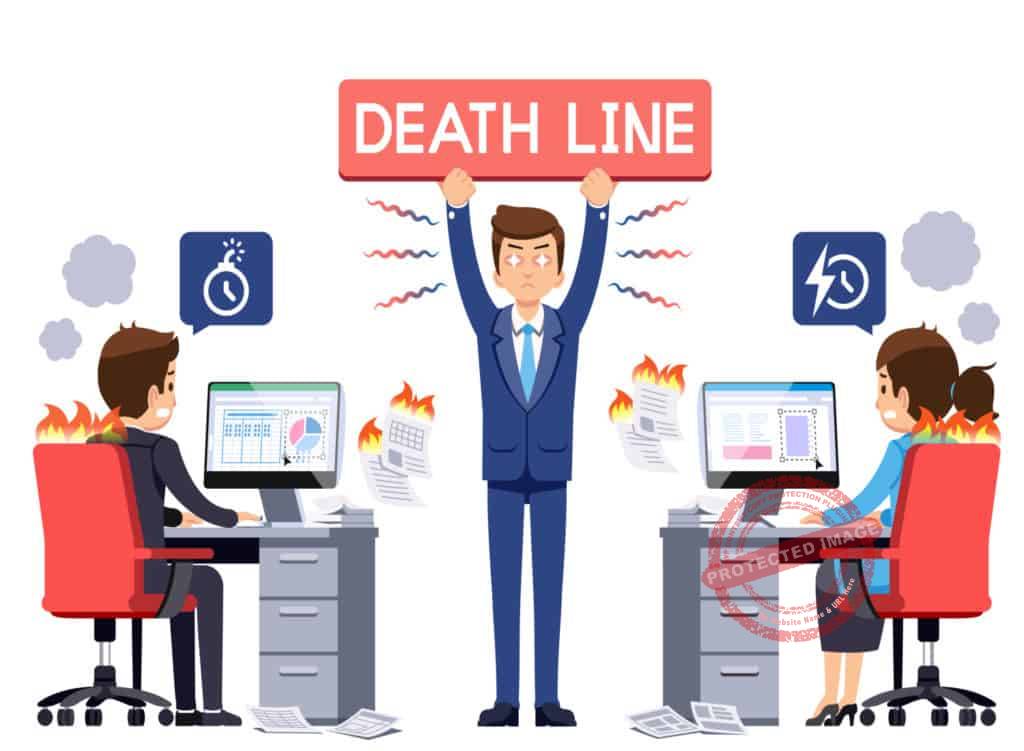How does one learn how to be a good leader? As a good and effective leader, you must guide and take your followers through the best path possible.
Your followers see you as their key to success.
You must be their compass when they are lost as well as their torch when they are in the dark.
The Importance Of A Good Leader In A Business Organization

A good leader fulfills many roles to ensure that the business’ operations and staff work smoothly and efficiently.
Here are some of a leader’s roles:
- Initiator: A leader starts work by creating plans on integrating company policies in the workplace and executing them with their subordinates.
- Guide: A leader provides guidance to subordinates on how to perform work efficiently and effectively. They can even go the extra mile by giving guidance unrelated to work.
- Motivator: A leader formulates ways on how they can motivate subordinates. It can be in the form of a reward system.

- Coordinator: A leader comes up with ways on how they can line up the personal interests of their subordinates with the company’s goals.
- Support: A leader provides social and emotional support to subordinates by boosting their confidence and raising their morale.
- Facilitator: A leader facilitates a comfortable work environment for subordinates.
Asides from those roles, a good leader also:
- Keeps people organized into singular units
- Acts as a bridge between the upper and lower parts of an organization
- Improves the value of all the people under them
- Brings out the potential of the followers
Steps To Becoming A Good Leader

You now know or have been refreshed about the roles and importance of a good leader, but the question of how to be a good leader remains.
There are three basic steps to becoming a good leader:
- First, you must have the traits of a good leader.
- Second, you must know your responsibilities.
- Third, you should figure out your leadership style and apply the appropriate and effective leadership style in your group and situation.
Characteristics Of A Good Leader

One of the basic keys to being a leader is to absorb the qualities of a good leader who can be in charge and can find the ability to be on top of things.
Below are just a few of those traits.
Read them and you might just pick up some important leadership skills.
Good Trouble Shooter

The road to success is not a straight one.
And that is also true when learning how to be a good leader.
You and your team will often find yourselves facing problems that may set you back.
Solving those problems can prevent you from going back on your progress or push you forward toward your goals.
You must be capable of coming up with ways on how to solve those problems without creating complications.
Excellent Decision Maker

You and your team will be faced with many situations where you need to make tough decisions.
Your decisions should be timely and sound and they should always consider the best interests of the stakeholders and your followers.
Strong Commitment

Before being a good leader, you must first become an ideal follower.
The best followers are the ones who are strongly committed to the instructions they are given and the organization they are part of.
If you yourself cannot commit to or follow the things you or your leader decided on, then your followers will hesitate in committing, too, when it is your turn to lead.
On the other hand, if you cannot commit to something you have decided despite being strongly committed to your goal and job, then you might need to re-evaluate your decision to see if it is the right one.
Accountability

As you learn how to become a leader — and a good one at that! — expect the inevitable. You will make bad decisions from time to time.
So, if you made a mistake, ensure that you do not stick with it.
Admit that you were wrong, and be accountable for your decisions and actions.
Also, you should take responsibility and face whatever consequences you have brought upon yourself and your team.
Ability To Delegate Tasks

You should not be the only one to decide, commit, and be accountable — or do all the work.
Learn to delegate tasks.
Do not think for one moment that you should baby your followers just because you are the leader.
As a leader, you have the right and responsibility to delegate tasks.
If you believe that one of the things you need to accomplish for the team is beyond you, it is best that you pass it on to someone suited for the job.
Confidence

Confidence is one of the crucial qualities of a good leader.
Remember that your followers treat you as their guide.
They will, by default, believe and trust that you know what you are doing.
However, it does not mean that they will never doubt or question your words and decisions.
Your followers will doubt you if you aren’t confident.
For example, passing a task to one of your followers without confidence can easily demotivate the one receiving the task and may encourage them to question your authority and capabilities.
Motivated

If your confidence in your decision to give a task to your staff isn’t enough to make them believe that they can accomplish the task, you should provide motivation and encouragement.
Motivation is a primary driver in work efficiency.
Note that you cannot motivate others if you yourself aren’t motivated.
Also, when motivating others, be sure that you are motivating them in the right direction.
Great Communicator

Actions speak louder than words.
While that’s true, both action and words are equally important and must be ‘heard’ when leading a group of people.
Good communication skills are important characteristics of being a good leader.
You can’t motivate others if you cannot communicate your thoughts well.
Words have the power to unite your group.
They can also motivate your followers.
And they can help your followers know which direction to take in order to achieve your goals.
Empathy

You should know that when you’re learning how to become a leader, you’re not going to lead a bunch of robots.
You are going to deal with human beings that are social and emotional.
In one decision you make, it will surely set off some character differences in your crew.
Empathy is the ability to recognize another person’s emotion.
Just knowing what your staff is feeling and being aware of their mood will allow you to create decisions and a work environment that promote good vibes and reduce negative emotions.
Honesty

There will be times when you are unsure of the decisions you make.
So while you always need to be confident, never place confidence on a decision you doubt.
In that kind of scenario, honesty is the answer.
It is better to honestly admit that you do not know anything than be confident and commit to something you do not know, which may lead to failure.
Integrity

Honesty is essential for integrity as integrity is one of the core keys to being a leader.
Integrity takes honesty to the next level.
You can be honest about your motivations, feelings, and thoughts.
However, being honest is nothing if the real reason for not telling lies is immoral and unethical.
The Responsibilities Of A Good Leader

Being a leader, you have basic responsibilities that you should always do.
Accomplishing all of them is one of the ways to be a leader.
Being The Best Example

Talk the talk, walk the walk: that is one of the best leadership tips you should follow.
If you want your followers to become ideal followers, then make sure that you show them how to be ideal followers.
Setting an example encourages your followers to copy you and reinforce your ideal.
Being The Proficient One

Being a leader, it is important that you should be at the front or ahead of everything and everyone.
You need to be aware of the consequences and results of all of your actions and decisions as a group.
Of course, it will be ideal if you can think two steps ahead of everyone.
But that’s a difficult skill to master.
Nobody expects you to be a fortune-teller.
Being Positive

Being positive is one of the most important leadership skills to have.
It allows you to create a positive environment for your team.
A positive environment pushes people to become more productive and engaged.
It also allows you to give off and spread confidence and enthusiasm.
One of the quickest ways to be always positive is to avoid blaming and complaining.
If you cannot do that, try your best to channel the bad vibes somewhere else.
Being Transparent

Never hide any crucial information from your members.
They should always be aware of anything related to the progress and status of the group.
Leaving someone in the dark only causes that person to distrust you and causes the breakdown of your crew.
Also, you should be accessible most of the time.
This means that you should be approachable and open-minded.
You should be the kind of person that people can open up to without fear and hesitation.
Remember that being transparent generates respect and trust.
You need a lot of those two in order to lead your crew well.
Always Looking For Opportunities To Improve

One of the most important leadership tips you should know is that you need to get rid of your weaknesses and limitations through continual development and learning.
As the saying goes, there is always room for improvement.
Never stop learning and looking for ways on how you can be a better leader.
Understanding Your Leadership Style

One of the first steps to being a good leader is to identify and understand your leadership style.
According to psychologist Kurt Lewin, there are six leadership styles: Authoritarian, Democratic, Delegative, Transformational, Transactional, and Situational.
Authoritarian

Your style of leadership falls under this category if you always provide clear-cut and fully detailed instructions.
You lay out the foundation of things you need to do and set up precise expectations.
Under the authoritarian style, the creativity of an organization is significantly low.
Your followers will also view you as dictatorial, bossy, and controlling.
One of the primary advantages of authoritarian leadership is that the group achieves progress faster.
However, the effectiveness of this style depends on the gap between the skill of the leader and the followers.
Teams with a skilled leader and average to below-average followers require this style.
Because the decision relies entirely on the leader, no time is wasted in consulting followers for opinions.
This leads to saving time and having fewer mistakes.
However, due to the authoritarian nature of leadership, there is the possibility of creating a hostile and abnormal environment.
Democratic

Your leadership style falls under democratic or participative if you value the input of your followers.
Despite giving your members the option to provide input and give suggestions, the leader in this democratic style still has the final word.
This style is effective most of the time.
Aside from giving members a voice in the group, the democratic leadership style also pushes the leader to give guidance to the members.
However, the guidance provided is unlike the laid-out, minute-by-minute planning of the autocratic leader.
One major disadvantage of this style of leadership is that people are less productive than those under authoritarian rule.
However, productivity is followed by high-quality results.
The democratic leadership style also empowers members of the group and make them further committed to the group’s goals.
Delegative

As the name suggests, this type of leader mostly passes tasks on to members.
Unlike the previous two styles, they are mostly hands-off to their groups.
They offer no guidance and they let their followers do the decisions.
Delegative leadership often falls apart fast.
Members tend to make demands, don’t cooperate well, and are unable to work without supervision.
The usefulness of this type of leadership type is narrow.
For one, it is only useful in groups with members that are highly specialized and skilled.
It can also be used in groups with members with already assigned roles and assignments.
Transformational

This style is often praised as the most effective leadership style.
It is a style that is required for becoming a great leader.
In this style, the leader often focuses heavily on both the organization and the members’ goals.
This style puts emphasis on creating positive changes and inspiring members.
According to numerous studies performed on this leadership style, it provides the highest output and satisfaction level of the group and its members.
The only drawback is that it is very demanding for the leader.
The leader that wants to adopt this style must be passionate, energetic, and emotionally intelligent.
Transactional

This is the most common type of leadership you will see in a business environment.
A transactional style commonly restricts the role of the leader and the members to employer and employees, respectively.
Employees accept the leadership of the employer because of the employment agreement.
Basically, the followers of this style of leadership are paid in exchange for following the leader’s command and decisions.
The biggest advantage of this style is that the roles of the leader and the followers are strictly defined.
Also, leaders can take advantage of monetary awards or rewards to motivate their followers.
However, the disadvantage here is that this style can prevent creativity due to the strict relationship between the leader and follower and their positions.
Situational

This type of leadership style varies.
And as its name suggests, it encompasses different styles and techniques, depending on what situation the group is in.
Sub-styles under situational include telling, selling, directing, coaching, and supporting.
Final Thoughts

Indeed, there are many ways to be a leader and lead your team effectively: understanding the value of teamwork, listening to your staff, etc.
However, regardless of the leadership style you choose to employ, you must focus on the bottom line; what will benefit the company, and what will benefit you and your staff.
The success of your business lies in your ability to become a great leader.
Practice what you preach and be the right role model your staff will follow.
Has this article helped you understand how you can be a good leader?
Do leave us your comments!
Click on Buy Now For a PDF Version of This Blog Post
 |










